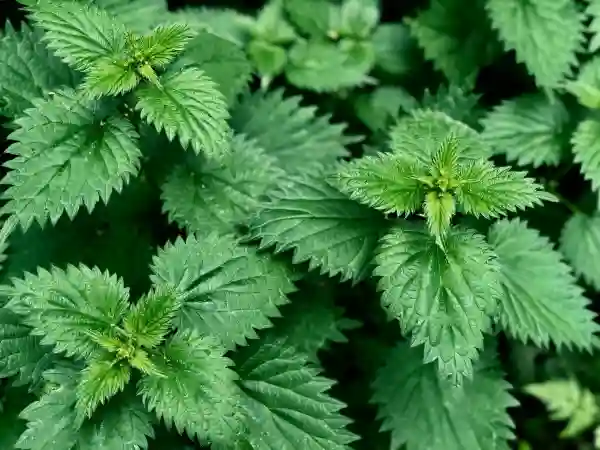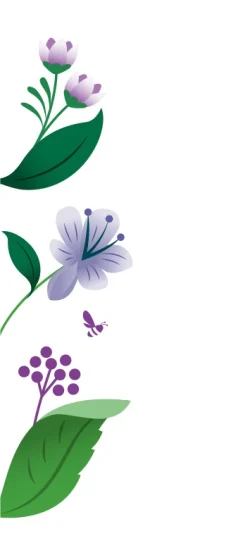

Fördelarna med en mild naturlig cleanse
Typically, the best times of year to undergo a natural cleanse are at the change of the seasons as the natural increase of heat in spring melts the build-up of congestion from the winter months. Undertaking a cleanse after the festive season also makes sense because (most of us) will have had a week or two of indulgence, eating and drinking things we might not usually have.
We will all have put our digestion, liver (and nerves) probably under a lot more stress than usual. It’s a good opportunity to wipe the slate clean.
But what are the benefits of cleansing and how will it make us feel?
We can recognise when our body is in need of a good cleanse as we will start to feel tired and run-down. We might also notice our digestion is a bit sluggish and our skin congested.
Feeling ‘clogged up’ can also affect our emotional state – we might hold onto negative issues, instead of letting them go. Cleansing on all levels is central to being healthy.
How do you get ready for a cleanse?
The best advice, is to do what is most appropriate for you. Don’t go all ‘gung-ho’ if you’ve never attempted cleansing before. You’ll end up exhausting yourself and potentially doing more harm than good.
To make the most of cleansing you need to already be healthy. So, don’t attempt one if you’re recovering from a recent illness or are menstruating. Also, cleansing isn’t about starving yourself and just eating raw vegetables. It’s about being sensible.
Here are some top tips to help you prepare:
Pick a time where you know you will get a chance to relax. When you cleanse, your body needs time to do its thing. This requires energy. When you decide to undergo cleansing it’s best to keep vigorous exercise to a minimum and get some early nights
Cleansing will involve a change in eating and drinking habits, so make sure you will not be in situations where you may be peer pressured into drinking alcohol or coffee, or getting a late-night takeaway
Pick a length of time that suits you. If you’ve never done a cleanse before, then perhaps opt for a weekend or two to three days to begin with. If you are a seasoned cleanser, you might consider a longer period such as a week
Once you’ve picked the right time, you can start to prepare and pick the type of cleanse that will work best for you.
Choosing the right type of cleanse for you
In Ayurveda (the ancient Indian system of medicine), there are three different (or body types), , and . Each benefits from cleansing in different ways. If you don’t know which dosha you are, take our quiz to find out.
If you have never undergone a cleanse before and are not sure which dosha might be the most dominant, then try this simple daily routine to begin with and then move onto a dosha specific cleanse the next time round:
In the morning
A good time to wake is before 7am. Later can cause you to feel a little 'muzzy' or low in energy.
Start the day with a cup of with a slice of lemon to stimulate the digestive juices and rehydrate. Before breakfast, mix Pukka Clean Greens powder in with a little juice to support your body throughout the rest of the day.
A good morning practice to enliven the senses and the mind before tackling the day ahead is to perform some alternate nostril breathing which will take between five to 15 minutes depending upon how many rounds you complete.
Sit in a comfortable position, rest your right thumb next to your right nostril, place your index and middle finger on your eyebrow-centre (third eye) and then hold your ring finger next to your left nostril.
To start, close the right nostril with your right thumb and inhale slowly through the left nostril whilst counting up to five. Then close the left nostril with your ring finger and at the same time remove your thumb from the right nostril and exhale through this nostril whilst counting up to five.
Inhale through the right nostril for five seconds and then close the right nostril with your right thumb and exhale through the left nostril for five seconds. This completes one full round; try to do five to 10 rounds.
Your lunchtime ritual
The after-lunch slump is a common occurrence, especially if you work a 9-5 routine. Getting back in touch with nature for just 15-20 minutes will get the blood flowing and oxygen circulating again whilst also helping you digest your food.
Even if it’s a brisk walk round the block, or sitting on a bench in the local park, the key is to reconnect with your environment and inhale some fresh air. If you are working or living in a busy urban environment, try and get away from the computer screen at least.
A good time to eat your lunch is different for everyone, but make sure you have left four hours from your last full meal and that you feel hungry. Try making kitchari or ‘food of the gods’ as it’s also known. You can make it the night before and take it with you for lunch.
If you make big batch, it could last you up to four days. It is an all-round healing and digestion-kindling meal. .
If you get peckish in the afternoon, go for slow-release energy providers like oatcakes with coconut oil, nuts like almonds or brazils, or even a rye bread with a spread of honey if you have a real sweet craving.
Make sure you also keep hydrated and stick to warming, spicy teas like . If you feel your energy dropping, try a tea like our tea as opposed to the usual coffee.
In the evening
The key is not to overeat in the evenings; try and keep it light. A dhal is a great option as it’s light but filling and full of protein.
A nice evening ritual is to perform for yourself is self-massage or yoga nidra – or even both. For self-massage, use a warmed oil if possible – even if you just warm it up in your hands, this is better than straight out of the bottle. Try a simple organic sesame oil or Pukka Active 35 Oil. Massage the oil into the entire body, working it deeply into the skin.
Take a good 15-20 minutes to do this and allow the oil to sink in. Then take warm bath or shower to rinse any excess oil off. Try only washing your main areas, as the oil will continue to absorb into and cleanse the skin once you have rinsed.
An alternative is to apply an oil that suits your dosha, to your wrists, neck, throat and ‘third eye’.
For vata try patchouli, chamomile or lavender.
For pitta try ylang ylang, neroli or rose.
For kapha try frankincense, cardamom or cinnamon.
Yoga Nidra is a powerful relaxation meditation technique performed in the lying position. It is one of the most beloved of all the relaxation-meditation techniques in the world today.
This is because the technique is practical and easy to do and creates the deep rest and relaxation required for good health, mental peace and higher awareness.
Here’s how to get started:
Lie on your back with your arms by your side. Become aware of the parts of the body that are touching the ground beneath you. Now take your awareness to the breath, allowing each exhalation to flow long and deeply and let go of any anxiety or fatigue. Feel your body sinking more heavily into the floor. Then turn to the senses with a first focus on hearing and then touch, sight (with your eyes closed) and your sense of smell. Fine tune your awareness with deep breathing.
Continue for 10 minutes. In your last exhales, experience a sense of letting go and release.
Try and aim to bed in before 10pm, after which pitta can kick in and our energy can sometimes begin to rise. Before bed, take Pukka Wholistic Triphala to rejuvenate your digestion and get it ready for the next day ahead.


Cleansing for your dosha type
If you are confident in which dosha is most dominant, then try these top tips for a dosha specific cleanse:
The vata cleanse
Vata naturally has difficulty holding onto energy and need to be cautious when cleansing. A short cleanse of one to three days with simple nourishing foods such as rice and mung-beans [see recipe] will help calm the mind and rekindle the digestive fire without weakening the body.
Think about adding aromatic but not hot herbs such as fennel, cumin, coriander and turmeric into your meals. Herbs that really support the vata constitution are those that will help create a sense of balance and stability, but also nourish the body at a deep level.
Gentle but nourishing herbal remedies such as Pukka Essential Spirulina capsules and Pukka Clean Greens powder will support the body throughout every stage of a cleanse without letting it become depleted. Balancing herbs such as ashwagandha will also help to support the nervous vata emotions.
Relaxing teas such as Love and Relax will help the body adapt without becoming stressed.
The pitta cleanse
Pitta types have boundless energy but can be hot and fiery. They can benefit from vegetable and fruit juicing (take a look at our juice and smoothie recipes for inspiration) as they are better at processing raw and cooler foodstuffs. It’s also important that they try and rest (even if they don’t want to.)
Herbs that are beneficial to the pitta dosha are those which are characteristically cooling and anti-inflammatory. Pukka Aloe Vera Juice and Juicy Wheatgrass really get to the root of deep seated heat and inflammation in the body and can be incredibly supportive to the fiery pitta person.
Pairing this with refreshing and hydrating teas likeMint Refresh, Peppermint & Licorice, Mint Matcha Green, Clean Matcha Green and Three Mint can help to keep the pitta thermostat under control.
The kapha cleanse
Kapha types can tolerate more prolonged cleanses as they are excellent stores of energy. Including warmth and spice into the diet will boost the normally sluggish kapha metabolism.
Think about adding herbs such as ginger, black pepper and turmeric into your meals. Herbs that keep kapha in check are those which are generally more heating and stimulating with the power to shift deep congestion. Pukka Wholistic Turmeric capsules and Clean Chlorella tablets pack a slightly hotter punch and will help remove sticky, tough accumulations from the body.
Pair this with Pukka teas that will help stoke digestive fires such as After Dinner, Revitalise, Turmeric Gold, Three Fennel and Three Ginger.
What herbs will benefit me during a cleanse?
Nettle – a nutritious plant filled with vitamins, minerals and protein. Nettle is great at ridding the body of excess waste, making it the body’s answer to a ‘spring-clean’. Skin conditions and seasonal allergies are helped by this plant, thanks to the way it cleanses the blood.
Fennel – with its strong anti-inflammatory properties, it soothes an upset digestive system and clears toxins.
Turmeric – one of the all-time great liver-loving herbs. This renowned super-spice helps your liver work more efficiently also giving your skin a glow of health.
Dandelion – is a traditional remedy for treating the skin and supporting liver.
Aniseed – this sweet aromatic seed naturally relaxes and supports digestion.
Spirulina – an algae and complete protein, containing every amino acid (helps to build up cells, muscles and tissue) and is the only non-animal source of vitamin B12.
Chlorella – it’s reputed for alkalising cleansing the blood and boosting immunity.
Other positive ways to support your cleanse
For the super keen, there are a few extra things you could do to enhance your cleanse. Introducing a light yoga routine or meditation in the morning or evening will help the body to relax. You could also visit a steam room or sauna, so help give your body an extra boost at sweating out those extra toxins.
And here are some thoughts on what to avoid:
Processed, refined foods, or foods with a high sugar or fat content. These will be more difficult for the body to break-down, putting added strain on your body. Dairy and meat is also tricky for the body to digest, so you might want to consider going veggie and/or dairy free.
Highly caffeinated or sugary drinks. These will cause a rise in blood sugar and potential energy crashes, which will disrupt your body’s natural balance.
Alcohol is processed in the liver, which is where detoxification occurs. Therefore, drinking places added pressure on the liver which will not support an efficient cleanse.
The key point to take away from all this is to take it easy and design a routine that will work for you. We are all individuals and will benefit from different types of cleansing routines. By picking the right routine, you can really feel the benefit of cleansing the Ayurvedic way, and approaching the year ahead feeling revived and rejuvenated.
